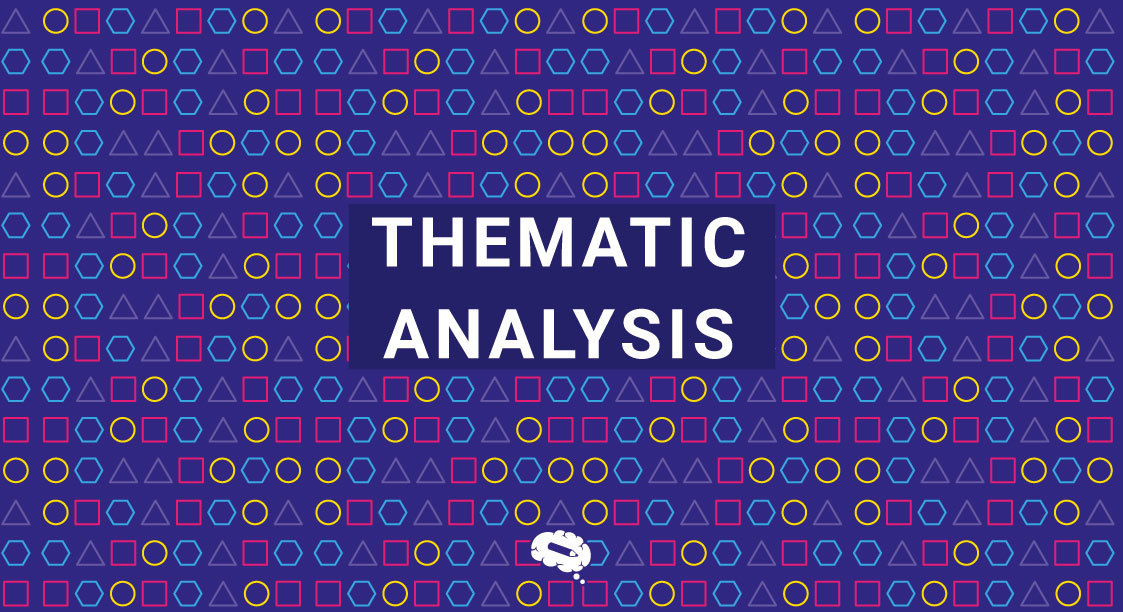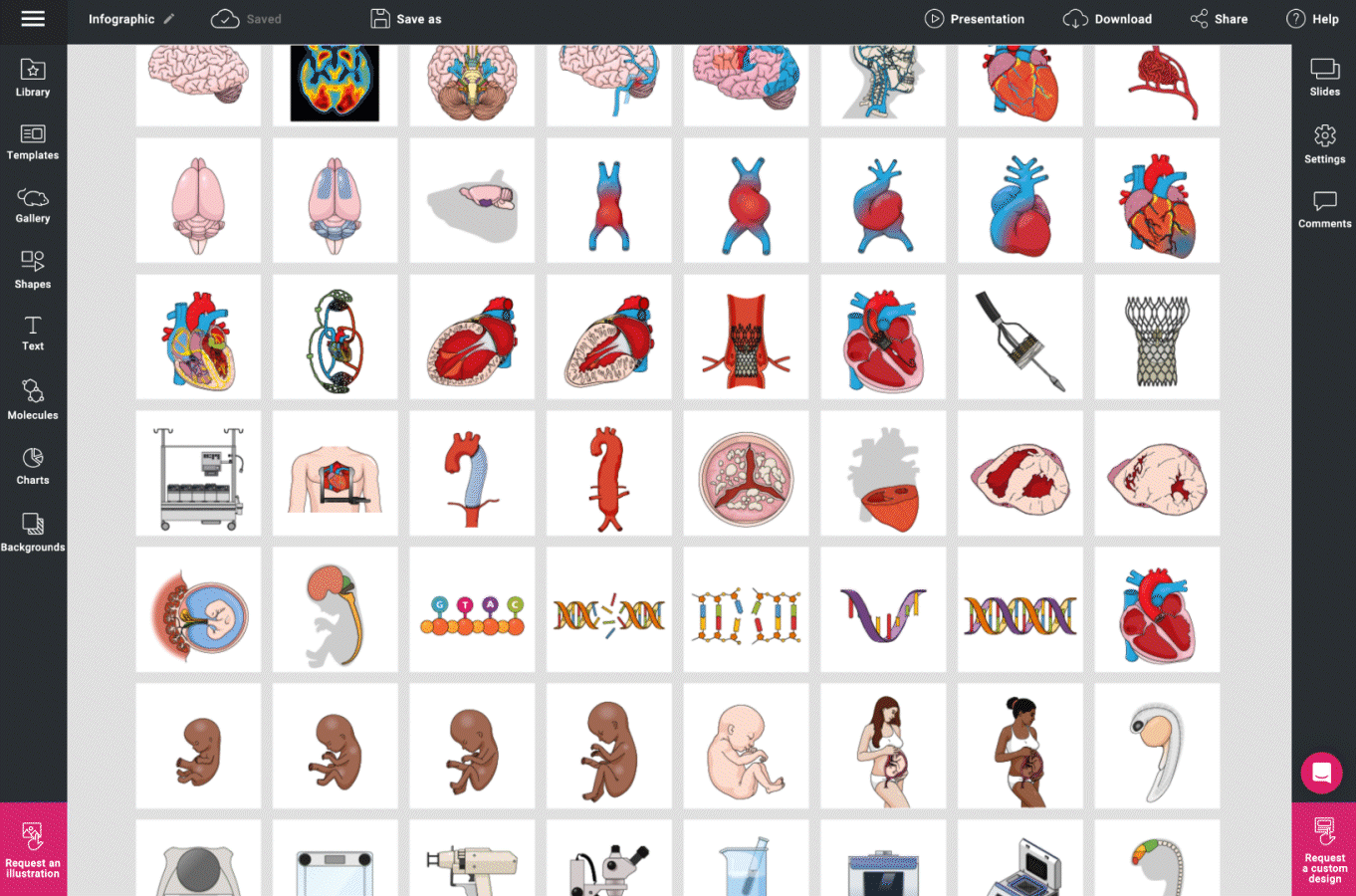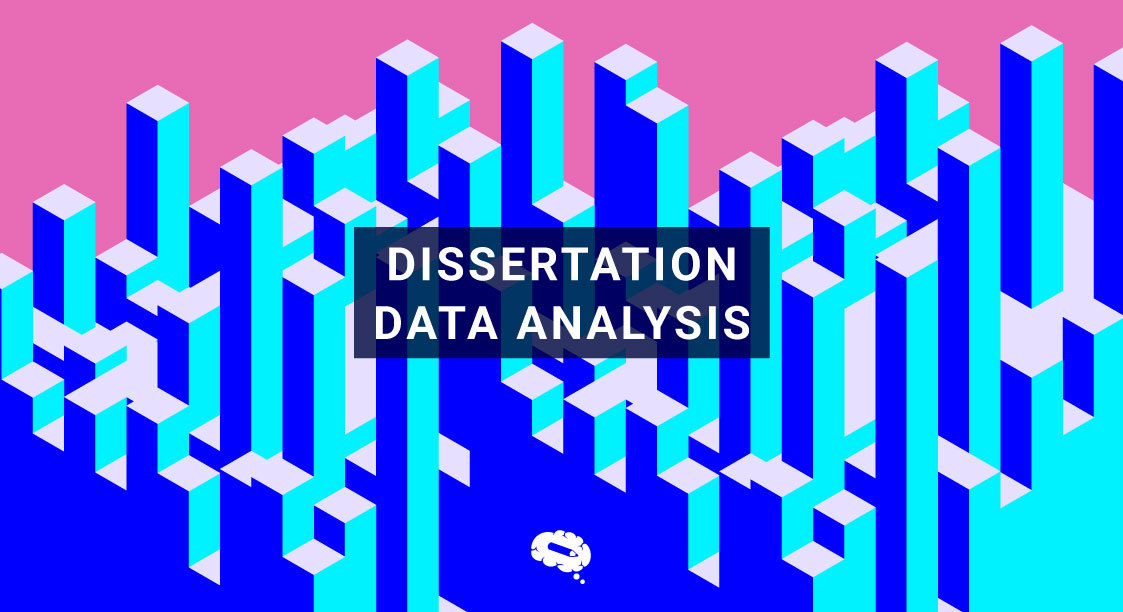Thematic analysis is a widely used qualitative research method that involves identifying patterns or themes in qualitative data. It is a flexible and versatile method that can be applied to a wide range of research questions and data types. It is commonly used in fields such as psychology, sociology, education, and healthcare to analyze data collected through methods such as interviews, focus groups, and open-ended surveys. In this article, we will provide an overview of thematic analysis, including its definition, main steps, and different approaches. We will also discuss the advantages and disadvantages of this method, as well as provide practical tips for conducting thematic analysis in research.
What is Thematic Analysis?
The thematic analysis involves systematically identifying, analyzing, and reporting patterns (or themes) within data that capture its essential meaning. The process of this method typically involves several stages, including data familiarization, generating initial codes, searching for themes, reviewing and refining themes, and defining and naming themes. During the analysis, the researcher aims to identify meaningful patterns within the data that help to answer the research question or explore a phenomenon of interest.
Thematic analysis is a flexible and highly interpretive method that allows researchers to capture the complexity and richness of qualitative data. It can be used to generate new insights, identify patterns and trends, and provide a detailed and nuanced understanding of social phenomena.
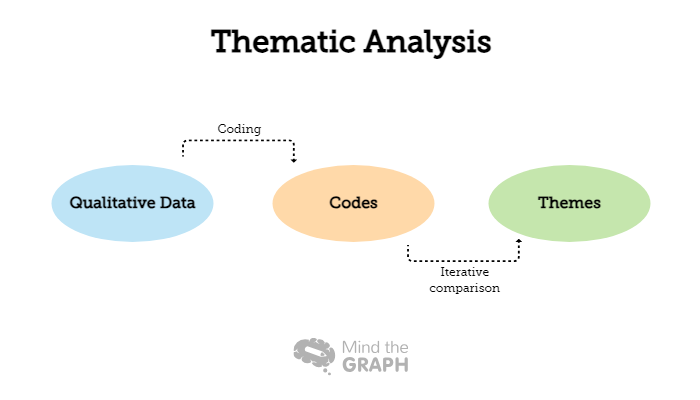
When Should I Use Thematic Analysis?
Thematic analysis can be used when you want to gain an in-depth understanding of qualitative data and identify patterns and themes within it. Here are some situations where you might consider using thematic analysis:
Exploratory Research
By identifying themes within the data, researchers can generate new insights and hypotheses for further investigation. Thematic analysis is particularly useful in exploratory research, as it allows for a general understanding of a phenomenon or exploration of a topic that has not been extensively studied before.
Data-rich Research
When dealing with large amounts of qualitative data, such as from focus groups, interviews, or surveys, systematic analysis and organization of data becomes crucial. Thematic analysis can be applied to identify key themes and patterns that emerge across the data set, making it a particularly useful method.
Interpretive Research
Thematic analysis is a highly interpretive method that allows researchers to capture the complexity and nuance of qualitative data. It is well-suited to interpretive research, where the aim is to explore subjective experiences, meanings, and perspectives.
Cross-cultural Research
By identifying themes that are common across cultures, researchers can use thematic analysis to generate insights into cultural patterns and differences across different groups or contexts.
What Are The Advantages and Disadvantages of Thematic Analysis?
Thematic analysis has several advantages and disadvantages that researchers should consider when deciding whether to use this method. While it has advantages, such as flexibility and depth, it also has some disadvantages, such as subjectivity and time-consuming nature. Therefore, it is essential to weigh the pros and cons of thematic analysis carefully and consider whether this method is appropriate for the research question and data type. Here are some of the main advantages and disadvantages of thematic analysis:
Advantages
Flexibility
It is possible to apply the flexible and adaptable method of thematic analysis to a variety of qualitative data types, such as interviews, focus groups, surveys, and other forms of qualitative data.
Depth
Through the use of thematic analysis, researchers are able to gain a deeper understanding of the data they are analyzing and uncover patterns and themes that may not be readily apparent using other methods.
Rigor
The rigor and systematic approach of thematic analysis involves multiple stages of analysis, which can improve the reliability and validity of the findings, making it a valuable method in qualitative research.
Interpretive
The interpretive nature of thematic analysis enables researchers to capture the complex and nuanced aspects of qualitative data, leading to rich and detailed insights into various social phenomena, making it a valuable tool in qualitative research.
Disadvantages
Time-consuming
A significant disadvantage of thematic analysis is its time-consuming nature when dealing with substantial amounts of data, which requires researchers to allocate adequate time and resources to conduct a comprehensive analysis.
Subjectivity
The subjectivity of thematic analysis can be a potential limitation, as it relies heavily on the researcher’s interpretations and may be influenced by their biases, preconceptions, and perspectives. This can affect the reliability and validity of the findings, and researchers need to acknowledge and address potential biases in their analysis.
Lack of Transparency
The lack of transparency in thematic analysis can be a potential disadvantage, as researchers may not always provide clear and detailed explanations of how themes were identified. This can limit the ability of others to replicate the study or assess the credibility of the findings.
Oversimplification
The reductionist nature of thematic analysis can be a potential drawback, as it may oversimplify the data and lead to the loss of important nuances and complexities that may be present in the data.
Step-by-Step Process of How To Do a Thematic Analysis
The thematic analysis involves familiarizing yourself with the data, generating initial codes, searching for themes, reviewing and refining themes, defining and naming themes, and finally analyzing and reporting the findings. Here is a step-by-step process for conducting a thematic analysis:
Step 1: Familiarization with the data
Start by thoroughly reading and reviewing the data to gain a general understanding of the content. This involves listening to or reading the data multiple times to identify important concepts, ideas, or recurring patterns. It is essential to take detailed notes throughout this stage to aid in the identification of themes.
Step 2: Generating initial codes
Begin coding the data by marking the text with relevant words or phrases that capture the essence of the content. The codes should be short, descriptive, and closely related to the content of the data. At this stage, it is essential to code all aspects of the data that relate to the research question.
Step 3: Searching for themes
After generating initial codes, start grouping them into potential themes that reflect the patterns and relationships in the data. It is essential to organize the codes into groups that make sense, even if some codes do not fit neatly into any category.
Step 4: Reviewing and refining themes
After identifying potential themes, review them to determine if they accurately capture the content of the data. Themes should be refined and clarified to make sure they reflect the essence of the data. Ensuring that the themes are relevant to the research question is also crucial.
Step 5: Defining and naming themes
Once themes have been reviewed and refined, define and name them. Themes should be named using a descriptive and meaningful label that accurately reflects the content of the data. It is essential to define each theme and outline the data supporting it.
Step 6: Analyzing and reporting
Finally, analyze the data by synthesizing the themes to provide a comprehensive account of the data. This involves interpreting the findings, drawing conclusions, and making recommendations based on the research question. It is important to report the findings in a clear, concise, and organized manner, using relevant examples from the data to illustrate each theme.
Different Approaches to Thematic Analysis
There are different approaches to thematic analysis, but the two main ones are Inductive Thematic and Deductive Thematic. Other approaches include Critical Thematic Analysis, Latent Thematic Analysis, and Semantic Analysis, among others. However, the Inductive and Deductive Thematic approaches are the most commonly used in research.
Inductive Thematic Analysis
In this approach, themes emerge from the data itself, without any preconceived ideas or theories. The researcher codes the data and identifies patterns and relationships, which are then grouped into themes. This approach is useful when there is no clear theoretical framework or when the aim is to generate new insights. It is particularly useful when the topic has not been extensively studied before, and the researcher wants to gain a broad understanding of the data without imposing preconceived categories or themes.
Deductive Thematic Analysis
This approach begins with a pre-existing theory or framework that guides the analysis. The researcher begins by identifying the concepts and themes that are relevant to the research question and then searches for evidence of these in the data. This approach is useful when there is an existing theory that needs to be tested or when the aim is to confirm or refute hypotheses. A deductive approach is best suited to research when the researcher has a specific research question or hypothesis that they want to test using existing theory or previous research findings.
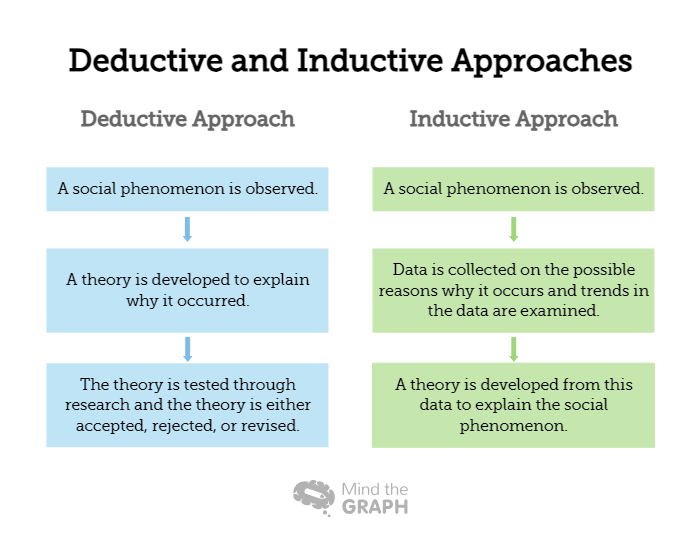
Semantic Thematic Analysis
In semantic thematic analysis, the focus is on the literal meaning of the words and phrases used in the data. Themes are identified by analyzing the explicit content of the data.
Latent Thematic Analysis
This approach goes beyond the surface level of the data to uncover underlying meanings and assumptions. The researcher identifies implicit or hidden meanings in the data, which are then grouped into themes.
Critical Thematic Analysis
This approach emphasizes the power dynamics in society and how they influence the data. The researcher analyzes the data to identify themes related to social justice, power, and oppression.
Reflexive Thematic Analysis
In this approach, the researcher is aware of their own biases and assumptions and actively reflects on how these might be influencing the analysis. The researcher may use a diary or other means of recording their thoughts and feelings during the analysis process.
These approaches are not mutually exclusive and can be used in combination to gain a more nuanced understanding of the data. The choice of approach depends on the research question, the data, and the researcher’s goals and perspective.
Tips for Thematic Analysis
Here are some tips for conducting thematic analysis in your qualitative research:
Familiarize yourself with the data: To conduct an effective thematic analysis, it’s crucial to familiarize yourself with the data. This means spending time reading and re-reading the data to get a sense of the content and themes that may emerge. This step helps researchers develop a good understanding of the data they are working with, which can lead to the identification of themes and patterns that may be missed otherwise.
Code systematically: Coding the data systematically and thoroughly ensures that all themes are captured. It involves systematically labeling or tagging data segments with relevant codes, which can be used to identify emerging themes. This step helps to keep the analysis organized and to identify emerging themes.
Engage in reflexivity: Reflexivity involves reflecting on your own biases and assumptions throughout the analysis process. This step is essential to minimize the impact of the researcher’s own beliefs and values on the analysis process. Researchers need to be aware of their biases and actively work to overcome them.
Create a clear coding scheme: Developing a clear and comprehensive coding scheme that captures all relevant themes is essential for effective thematic analysis. This step involves identifying all the relevant themes and creating a set of codes to label data segments related to each theme. A clear coding scheme helps researchers maintain consistency in their analysis and makes it easier to identify emerging themes.
Maintain transparency: Documenting the analysis process and providing clear explanations for how themes were identified and coded is crucial for maintaining transparency. It allows other researchers to follow the analysis process and assess the validity of the findings.
Validate findings: Using member checking or other methods to validate the findings and ensure accuracy is essential for ensuring the credibility of the analysis. Member checking involves sharing the analysis with the participants to validate whether the findings accurately represent their experiences or perspectives.
Examples of Thematic Analysis
Example 1
Research Question: How do young adults perceive the impact of social media on their mental health?
Data Collection: In-depth interviews with 20 young adults (aged 18-25) who use social media regularly.
Data Analysis: The interviews were transcribed and analyzed using a thematic analysis approach. The following themes emerged:
- Negative self-comparison: Many participants discussed feeling inadequate or inferior when comparing themselves to others on social media. They described feeling pressure to present a certain image and the impact this had on their self-esteem.
- Fear of missing out (FOMO): Participants talked about feeling anxious or stressed when they saw posts from friends or acquaintances engaging in activities they were not part of. They described feeling pressure to stay connected and up-to-date on social media to avoid missing out.
- Cyberbullying: Some participants discussed experiences of being bullied or harassed on social media. They talked about feeling helpless and isolated when this happened and the impact it had on their mental health.
- Positive social connections: Despite the negative aspects, many participants also described how social media helped them stay connected with friends and family, especially during times of social distancing.
- Strategies for managing social media use: Participants discussed various strategies for managing the negative impact of social media on their mental health, such as setting limits on their use, unfollowing accounts that made them feel bad, and focusing on positive aspects of social media.
Conclusion: This thematic analysis suggests that social media use can have both positive and negative effects on young adults’ mental health. Negative self-comparison, FOMO, and cyberbullying emerged as significant negative themes, while positive social connections and strategies for managing social media use emerged as positive themes. These findings can inform interventions aimed at promoting healthy social media use among young adults.
Example 2
Research Question: What are the key themes in teachers’ perceptions of the challenges and benefits of remote teaching during the COVID-19 pandemic?
Data Collection: Online survey of 100 K-12 teachers in the United States who were teaching remotely during the COVID-19 pandemic.
Data Analysis: The survey responses were analyzed using a thematic analysis approach. The following themes emerged:
- Technological challenges: Many teachers reported struggling with the technological aspects of remote teaching, such as unreliable internet connections and difficulties with online platforms.
- Student engagement: Participants discussed challenges related to engaging students in remote learning, such as difficulties with monitoring student progress and maintaining student motivation.
- Work-life balance: Several participants described struggling to balance their work and personal lives while teaching remotely, particularly due to the blurring of boundaries between work and home.
- Benefits of remote teaching: Despite the challenges, many participants also discussed the benefits of remote teaching, such as increased flexibility and opportunities for personalized learning.
- Support from colleagues and administrators: Some participants talked about the importance of support from colleagues and administrators in navigating the challenges of remote teaching.
Conclusion: This thematic analysis suggests that remote teaching during the COVID-19 pandemic presented a variety of challenges for teachers, particularly related to technology, student engagement, and work-life balance. However, participants also identified the benefits of remote teaching and the importance of support from colleagues and administrators. These findings can inform efforts to improve remote teaching practices and support teachers in navigating the challenges of remote teaching.
These are hypothetical examples created for the purpose of understanding thematic analysis. For more examples, access this website.
Over 75,000 Accurate Scientific Figures to Boost Your Impact
Mind the Graph is an online platform that provides scientists with a wide range of tools to create engaging and impactful visualizations for their research. With its extensive library of over 75,000 accurate scientific figures and templates, researchers can easily create high-quality graphics that effectively communicate their findings to a wider audience. The platform offers a variety of customizable templates and diagrams for infographics and posters. It also provides access to an extensive library of scientifically accurate images, making it easy to create professional-looking graphics.

Subscribe to our newsletter
Exclusive high quality content about effective visual
communication in science.

